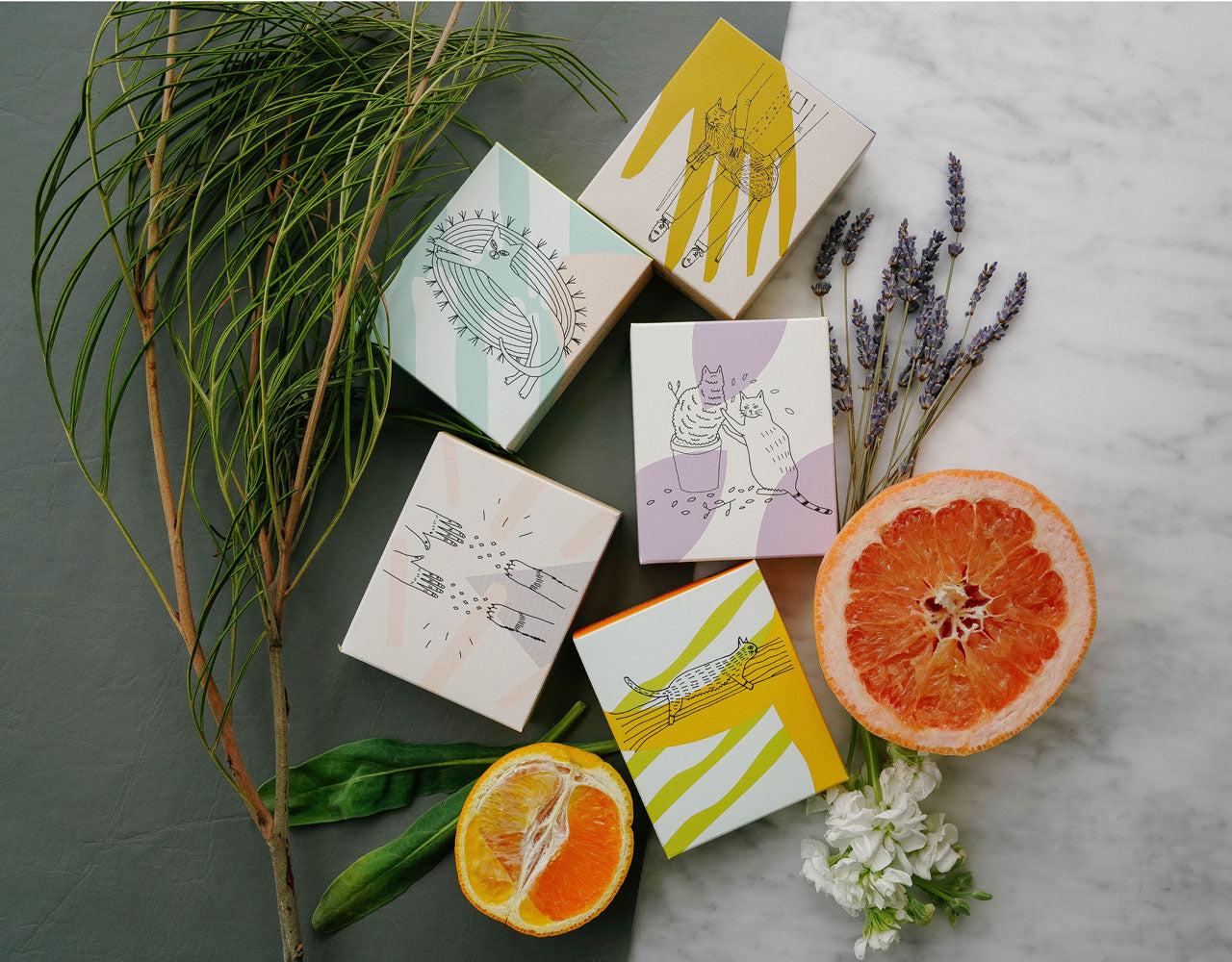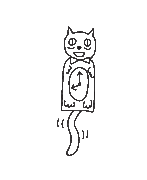
Soap is a cleansing and lubricating product that is the result of a very specific chemical reaction called saponification. It’s not particularly sexy, but since soap was the very first product ever sold by Meow Meow Tweet, it holds a special place in our hearts and business. It also happens to be one of the products that we get asked about the most.
DOES MEOW MEOW TWEET’S SOAP HAVE LYE IN IT?
This is the most common question we get about our soaps. Most are concerned about the presence of lye because they recognize it as an industrial cleaner, or because they remember the grisly chemical burn scene from Fight Club. We want to make the answer to this question very clear: no, our soap does not have lye in it. We, along with every other soapmaker ever, do use lye to make soap, but the process of saponification splits the chemical structure of lye apart to create something new - soap! So while lye is intrinsic to the process of soapmaking, it is no longer present by the time our soap bars reach your hands.
WHAT IS SOAP?
Soap is the specific result of saponification, a reaction that is fabled to have first been discovered by Ancient Greeks. The story goes like this: at the foot of Mt. Sapo, fats and wood ash from animal sacrifice would collect in the river, mingling together and creating a frothy, cleansing lather in their wake. Since then, recipes for soap have popped up in numerous different cultures around the world, always including three main components: wood ash or lye, some type of fat, and water.
Lye refers to an alkaline substance, now found industrially produced as either Sodium Hydroxide (NaOH) or Potassium Hydroxide (KOH, also known as “potash”). We use a food grade lye in our products because it produces more uniform results and meets all FDA standards. Traditionally, the fat used to make soap would have been tallow, or animal fat. Instead, we always use plant-based fats. Different fats produce different properties in the final product, so we get to have fun mixing and matching them to different results. Coconut oil gives a beautiful shine and bubbles to the lather, castor oil creates a creamy lather, and shea, mango, or cocoa butters lend solidity to the final product.
A lye molecule is made up of sodium, hydrogen, and oxygen and fat molecules are made up of three fatty acids connected to a glycerol cap (together this is called a triglyceride). When lye is mixed with water, the sodium, hydrogen, and oxygen components all split apart. When the water and lye mixture is then heated with fats, the sodium from the lye combines with the three fatty acids to create soap. This is saponification.
Saponification results in a molecule that contains fatty acids and sodium, a molecule that is attracted to both water and fat. The fatty portion attracts more fats, while the sodium portion of the molecule is thirsty for hydration. This means that the soap molecule is attaching both to the grease on your skin and to the water you use to wash it all down the drain, leaving your skin nice and clean.
WHY SHOULD I BUY NATURAL, HANDMADE SOAPS?
Soap is not the only product that results from the process of saponification; the remaining hydrogen and oxygen from lye, and the glycerol left over from fat combine to create another product, called glycerin. Many mass producers remove glycerin from their soap in the interest of using it to create other products and maximize profits. Handmade soapmakers, on the other hand, rarely separate the glycerin from their soap. Artisan soapmakers are proud to retain the glycerin in their soap as it is highly moisturizing and helps to balance out the drying effects of soap on your skin. We further ensure that our soap is amazing for your skin by “superfatting,” or using more fat than is necessary in the recipe. This allows some of the fat to avoid being saponified, resulting in a beautiful, emollient, and moisturizing soap.
Most mass produced soaps rely on synthetic ingredients instead of glycerol because they are cheaper and can result in what feels like a more satisfying end result. For example, most mass produced soaps contain parabens and sodium lauryl sulfate (SLS), both ingredients that produce a frothy lather and help extend shelf life. Unfortunately, these ingredients are also irritating to sensitive skin and are known endocrine disruptors which can cause potentially serious health issues down the line. Synthetic soaps also often contain a “free alkali,” which also helps the product last longer on the shelf and create a visible lather when used. But free alkalis will strip all of your skin’s natural oils away, leaving you feeling squeaky clean but ultimately dehydrated and sensitive.
Soap is undoubtedly a big part of our everyday lives, helping us to stay healthy and keep our skin clear of dirt and grime. Meow Meow Tweet’s soaps are always handmade in small batches, retaining their glycerin component and therefore working to moisturize and retain the balance of your skin, naturally. We love coming up with new scents and combinations designed to bring out the best in your skin and deliver a little dose of aromatherapy every time you wash! My current favorite is the Tangerine Basil Body Soap, because it smells sweet and peppery and I love the way the poppy seeds feel as they gently exfoliate my skin.
Faye Lessler is a California-born, Brooklyn-based freelance writer and founder of lifestyle blog, Sustaining Life. She loves to write mission-driven content while sipping black tea in a beam of sunshine.

(oils and butters combining with lye)

(pouring into silicone molds)
(cutting into bars)
(curing for 4 weeks)
Okay, so one more little note. If you’re still feeling confused about what lye is, and you’re concerned because it is a chemical compound, think about the following. Baking soda (sodium bicarbonate or NaHCO3) is a chemical compound that most of us are not worried about or confused by. It is a commercially produced ingredient that we use in baking, to brush our teeth, to deodorize our refrigerators, and clean our homes. If you are feeling distant from your high school chemistry class, check out this video to see another familiar and innocuous chemical reaction.



